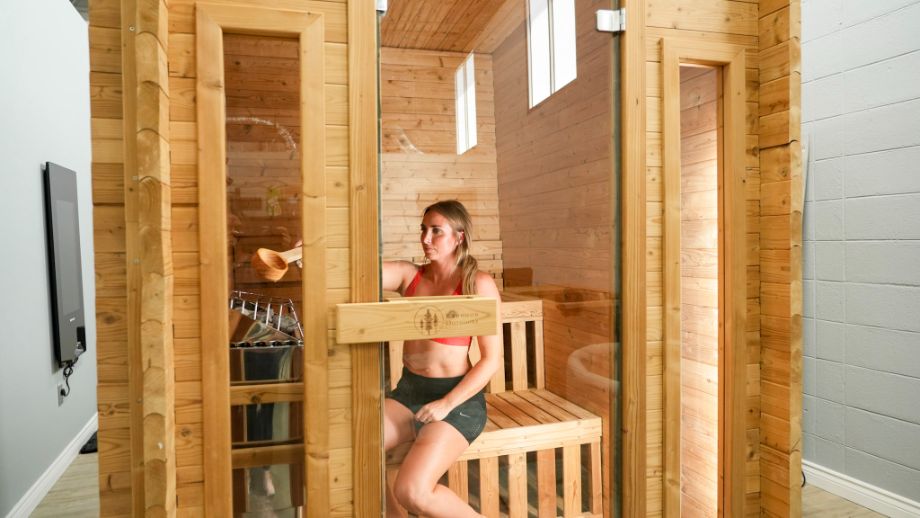We test and review fitness products based on an independent, multi-point methodology. If you use our links to purchase something, we may earn a commission. Read our disclosures.
If you’re considering investing in one of the best home saunas, we highly recommend learning how to properly use your new sauna and the potential health benefits of regular sauna use.
Whether you’re eyeing a steam room, traditional sauna, portable sauna, or infrared sauna, you’ll be exposing yourself to high temperatures, which signals your body to regulate your internal temperature and begin perspiring.
Sauna sessions are similar to the benefits of cardio exercise in that they may help improve heart health. We’ll dive into all the benefits of sauna use a bit later. First, we’ll look at the different types of saunas and tackle how to use a sauna in the traditional Nordic way practiced by the folks of Finland for centuries.
Different Types of Sauna Experiences
While most research around saunas focuses on the traditional dry sauna (with long and celebrated histories in Nordic countries like Finland), there are other saunas types we’ll touch on here to lay the groundwork on general sauna use.
Dry Sauna
Dry saunas are the traditional form of heat therapy in Nordic cultures. They are typically stand-alone structures made from wood with either an electric heat source or a wood-burning stove that produces dry, hot air. Because of the dry heat, this type of sauna runs very hot, ranging from 160 to 200 degrees Fahrenheit and offers low moisture, running from 10 to 20% humidity.
Traditional saunas also feature sauna rocks. These are placed directly over the heating element so you can ladle water over the rocks to temporarily increase the humidity.
Steam Room
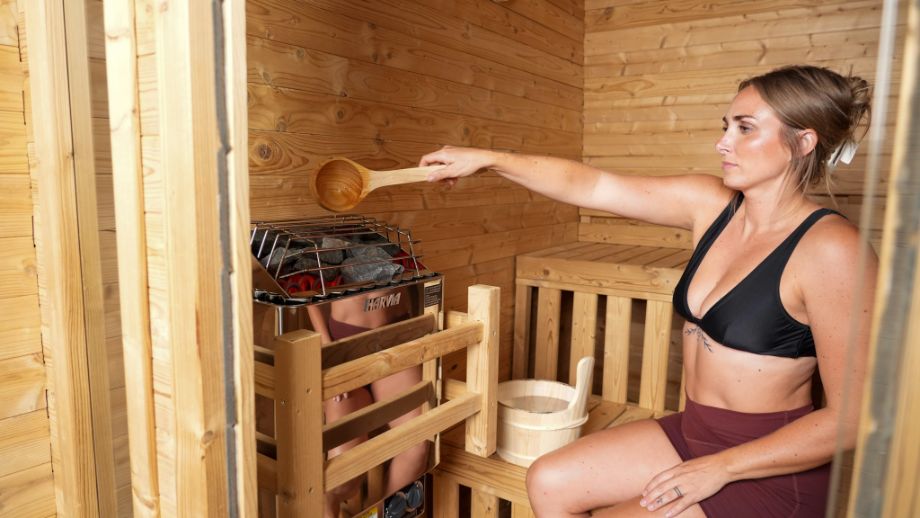
Steam rooms date back to ancient Roman and Greek cultures. In modern times, steam rooms are most often associated with Turkish baths and public bathhouses. Steam room benefits are similar to dry saunas but are typically indoors and heated via water vapor from a steam generator to create temperatures from 100 to 120 degrees Fahrenheit and 100% humidity.
RELATED: Steam Room Vs Sauna
Infrared Sauna
Infrared saunas work by using infrared heat lamps. These heat lamps work nearly instantly to emit an infrared light, which heats your body without heating the air. These types of saunas run at lower temperatures, ranging from 120 to 150 degrees Fahrenheit, and do not produce vapor, humidity, or scent.
While infrared sauna benefits are similar to traditional saunas, there are some differences—and less research focused on infrared-specific heat sources.
How To Use A Sauna
According to the North American Sauna Society, the traditional sauna experience is meant to be relaxing and social. The society recommends taking your time and allowing up to two hours for a sauna bathing session. Sauna sessions consist of intermittent sauna use, cold showers, and making sure to drink plenty of water.
RELATED: Best Electrolyte Powder
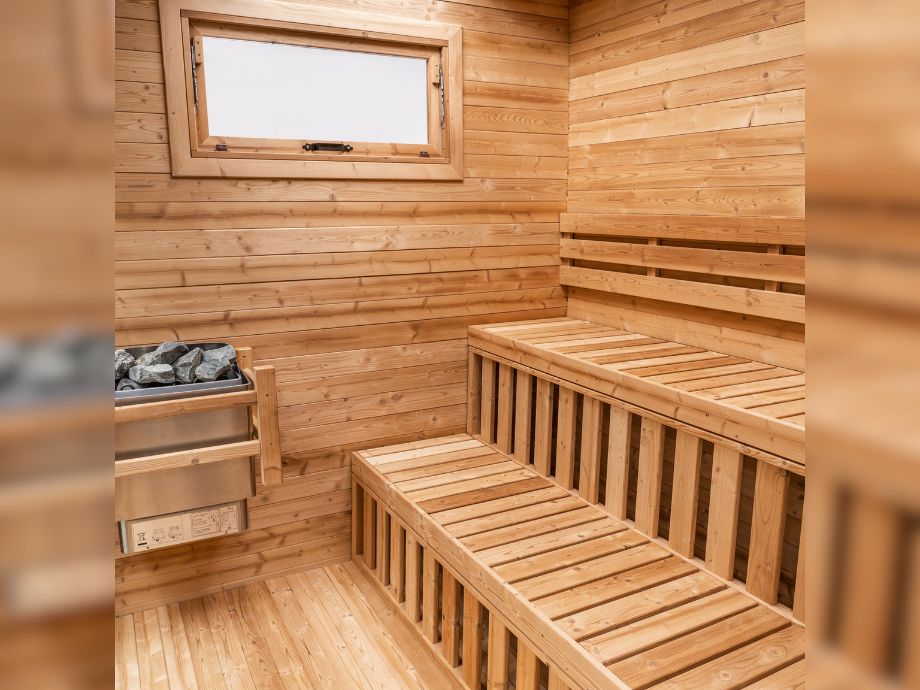
Here is the Sauna Society’s how-to guide on enjoying a traditional Finnish sauna:
- Hydrate with one or two glasses of water before starting your first sauna session.
- Rinse off in the shower before the sauna (rinsing off in a swimsuit is fine).
- Warm yourself up in the dry sauna, ladling water over the sauna rocks for vapor as desired until you start perspiring, about 8 to 10 minutes.
- After your first sweat, leave the sauna for another rinse in the shower.
- Allow your body temperature to cool down and rest. Drinking another glass of water is recommended.
- Re-enter the sauna for another 8 to 10 minutes, pouring water on the sauna rocks as desired.
- Upon the second visit in the sauna, you can use the traditional vihta whisk (an arrangement of dried birch and twigs used to gently beat and massage the skin).
- Exit the sauna again and wash off in the shower.
- Have another glass of water to cool down and rest outside the sauna.
- Re-enter the sauna for your last 8 to 10 minute session.
- End the session by exiting the sauna for a cool bath, shower, or swimming if possible.
- Allow time to rest and relax after by sitting or lying down.
- Drink another glass of water or something refreshing and pair it with a light snack.
- Once you stop sweating and feel cooled down, you can get dressed and end your session.
How Sauna Sessions Affect Your Body
In a systematic review published by the Evidence-Based Complementary and Alternative Medicine1 journal, researchers discuss the effects sauna has on the body. And the first thing that happens when you voluntarily expose yourself to short-term extreme heat is that your skin temperature elevates along with core body temperature.
This activates a thermoregulatory2 process, which is essentially your natural ability for you to keep your body temperature controlled, even when the air temperature is drastically different.
The thermoregulatory process happens via the hypothalamus3 (an area of the brain that produces hormones that control your body temperature, heart rate, and hunger) and the central nervous system (CNS).
RELATED: Understanding Your Target Heart Rate
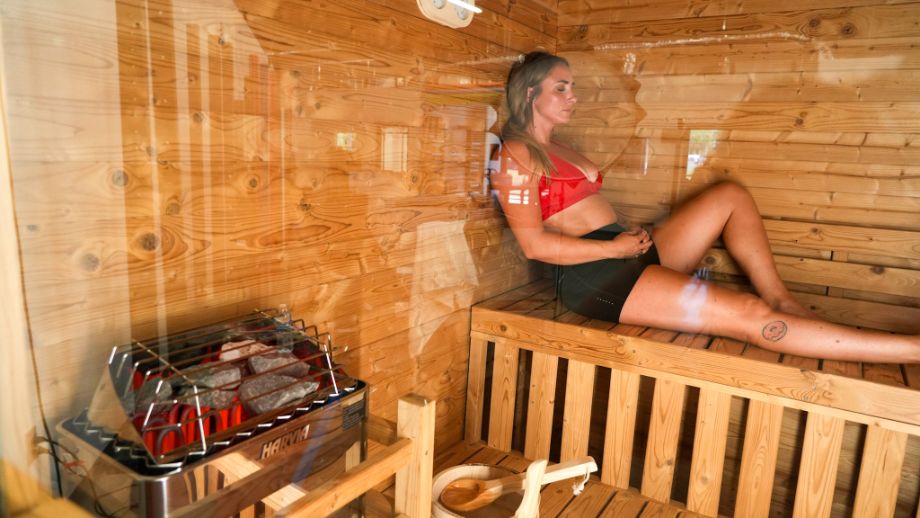
The review notes that this process leads to the activation of your autonomic nervous system4, which regulates involuntary processes like your heart rate, blood pressure, respiration, and digestion.
All this to say, your body will start sweating to regulate your core temperature. As sweat evaporates from the surface of your skin, it allows your core temperature to cool down and facilitate temperature homeostasis.
In a control trial published by the Journal of Athletic Training5, researchers found that full body exposure to extreme heat creates adaptations on the cellular level, too.
This trial found that these discrete metabolic changes included production of heat shock proteins, reduction of reactive oxygenated species, reduced oxidative stress and inflammation pathway activities, increased nitric oxide bioavailability, and increased insulin sensitivity.
Health Benefits of Regular Sauna Use
Most of the studies around the health benefits for sauna use are focused on traditional dry saunas and are typically tested with healthy adults without major health conditions. Here are some of the top benefits you can expect from regular sauna bathing:
Can Help Increase Blood Circulation
Earlier we talked about how saunas affect your body and one of the main things that happens is an increase in your core temperature and skin temperature. Your skin temperature rises mainly due to an increase in circulation.
According to a Mayo Clinic6 review, during a sauna session your blood vessels expand for more efficient blood flow to the skin, decreases blood flow to your internal organs, and increases how much you sweat.
May Potentially Lower Blood Pressure
In the same Mayo Clinic review6 mentioned above, researchers note that there is evidence to suggest that sauna bathing has positive effects on blood pressure modulation. However, many studies relating blood pressure and sauna use have been conducted on patients with preexisting medical conditions, like vascular disease.
RELATED: Does Cardio Lower Blood Pressure?
That said, a small study of 19 healthy adults (free from heart disease and high blood pressure) published by Complementary Therapies in Medicine7 found that blood pressure increased during sauna sessions but returned to lower than original baseline when tested after the sauna and 30 minutes of rest.
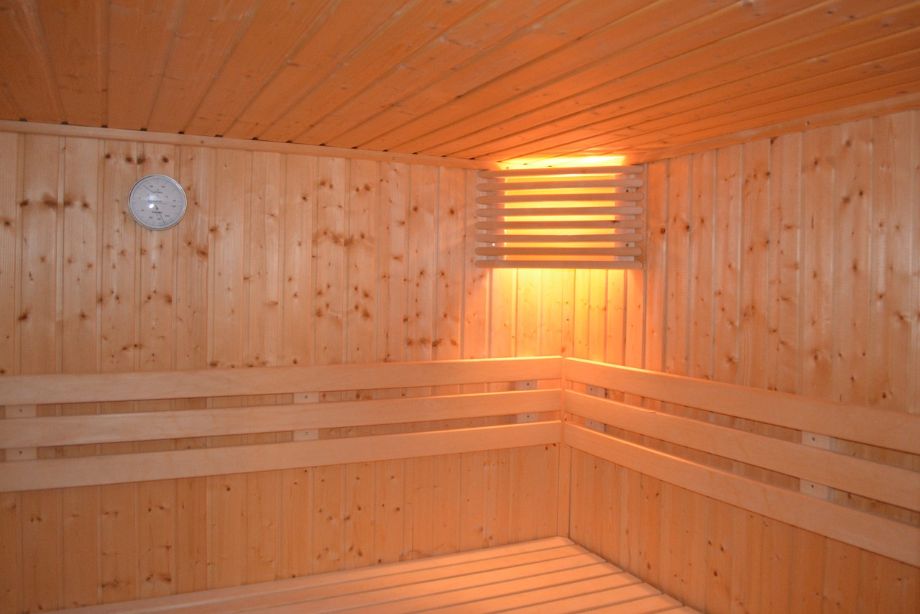
May Help Improve Cardiovascular Health
In addition to the potential to increase circulation and reduce blood pressure, sauna bathing may positively affect your heart health (similar to cardiovascular exercise).
According to the British Medical Association Journal8, much like cardio exercise, your heart rate increases when exposed to extreme heat. This is beneficial because your heart consists of muscle tissue9, much like your other skeletal muscles and needs to undergo stress to maintain strength and efficiency.
May Help Reduce Muscle Recovery
Many folks in the strength and conditioning community participate in sauna bathing to recover from intense physical exercise. Often, recovery methods like heat therapy and ice bath benefits are regarded more for the ability to reduce the perception of soreness more than anything else.
However, a study published by Scandinavian Journal of Clinical and Laboratory Investigation10 found that using a traditional Finnish sauna after aerobic exercise reduced oxidative stress and allowed for quicker muscle recovery. Oxidative stress11 (also known as free radicals) can damage the cells and proteins and reduce the rate of recovery from strenuous exercise.
How To Use A Sauna: FAQs
How long should you sit in a sauna?
If you follow the Nordic sauna traditions, sauna sessions are broken up into three or four 8 to 10 minute bouts of hot air exposure followed by a brief shower and rest. Otherwise, you should aim for no more than 10 to 15 minutes.
What do you do while in a sauna?
Sauna sessions are traditionally meant to be social, enjoyable, and relaxing. You can either sit or lie down and ladle water on to the sauna rocks as desired for humidity.
Do I wear clothes in a sauna?
It’s common to wear a swimsuit for sauna bathing, while some folks prefer to wear nothing but their towel.
Can I bring my phone in a sauna?
Smartphones are best left outside the sauna because of the extreme heat they will be exposed to.
What should you do immediately after the sauna?
It’s recommended to rinse off, drink water, and rest.
References
- Hussain J, Cohen M. Clinical Effects of Regular Dry Sauna Bathing: A Systematic Review. Evid Based Complement Alternat Med. 2018;2018:1857413. Published 2018 Apr 24. doi:10.1155/2018/1857413
- Liedtke WB. Deconstructing mammalian thermoregulation. Proc Natl Acad Sci U S A. 2017;114(8):1765-1767. doi:10.1073/pnas.1620579114
- Zhao ZD, Yang WZ, Gao C, et al. A hypothalamic circuit that controls body temperature [published correction appears in Proc Natl Acad Sci U S A. 2017 Feb 28;114(9):E1755]. Proc Natl Acad Sci U S A. 2017;114(8):2042-2047. doi:10.1073/pnas.1616255114
- Waxenbaum JA, Reddy V, Varacallo M. Anatomy, Autonomic Nervous System. [Updated 2023 Jul 24]. In: StatPearls [Internet]. Treasure Island (FL): StatPearls Publishing; 2023 Jan-.
- Iguchi M, Littmann AE, Chang SH, Wester LA, Knipper JS, Shields RK. Heat stress and cardiovascular, hormonal, and heat shock proteins in humans. J Athl Train. 2012;47(2):184-190. doi:10.4085/1062-6050-47.2.184
- Jari A. Laukkanen, MD, PhD; Tanjaniina Laukkanen, MSc; and Setor K. Kunutsor, MD, PhD. Cardiovascular and Other Health Benefits of Sauna Bathing: A Review of the Evidence. Mayo Clinic Proceedings. August 2018.
- Ketelhut S, Ketelhut RG. The blood pressure and heart rate during sauna bath correspond to cardiac responses during submaximal dynamic exercise. Complement Ther Med. 2019;44:218-222. doi:10.1016/j.ctim.2019.05.002
- Taggart P, Parkinson P, Carruthers M. Cardiac responses to thermal, physical, and emotional stress. Br Med J. 1972;3(5818):71-76. doi:10.1136/bmj.3.5818.71
- Ripa R, George T, Sattar Y. Physiology, Cardiac Muscle. [Updated 2022 Jun 2]. In: StatPearls [Internet]. Treasure Island (FL): StatPearls Publishing; 2022 Jan-.
- Sutkowy P, Woźniak A, Boraczyński T, Mila-Kierzenkowska C, Boraczyński M. The effect of a single Finnish sauna bath after aerobic exercise on the oxidative status in healthy men. Scand J Clin Lab Invest. 2014;74(2):89-94. doi:10.3109/00365513.2013.860616
- Powers SK, Jackson MJ. Exercise-induced oxidative stress: cellular mechanisms and impact on muscle force production. Physiol Rev. 2008;88(4):1243-1276. doi:10.1152/physrev.00031.2007
Further reading

If you’re looking to get your heart rate up and your forearms pumping, grab some battle ropes. Review this list to find the best battle rope for you. Read more

You probably already know that they can help your muscle recovery, but do BCAAs give you energy? Find out the answer from a registered dietitian. Read more

In our Bowflex BXT216 review, we go over this now-discontinued treadmill and help you find one that will suit your needs. Read more

Whey protein powder is generally safe for most people to take, but there are some drawbacks and potential adverse side effects of whey protein. Keep reading to learn more about whey protein and the potential whey protein side effects, possible benefits, and whey protein alternatives. Read more

